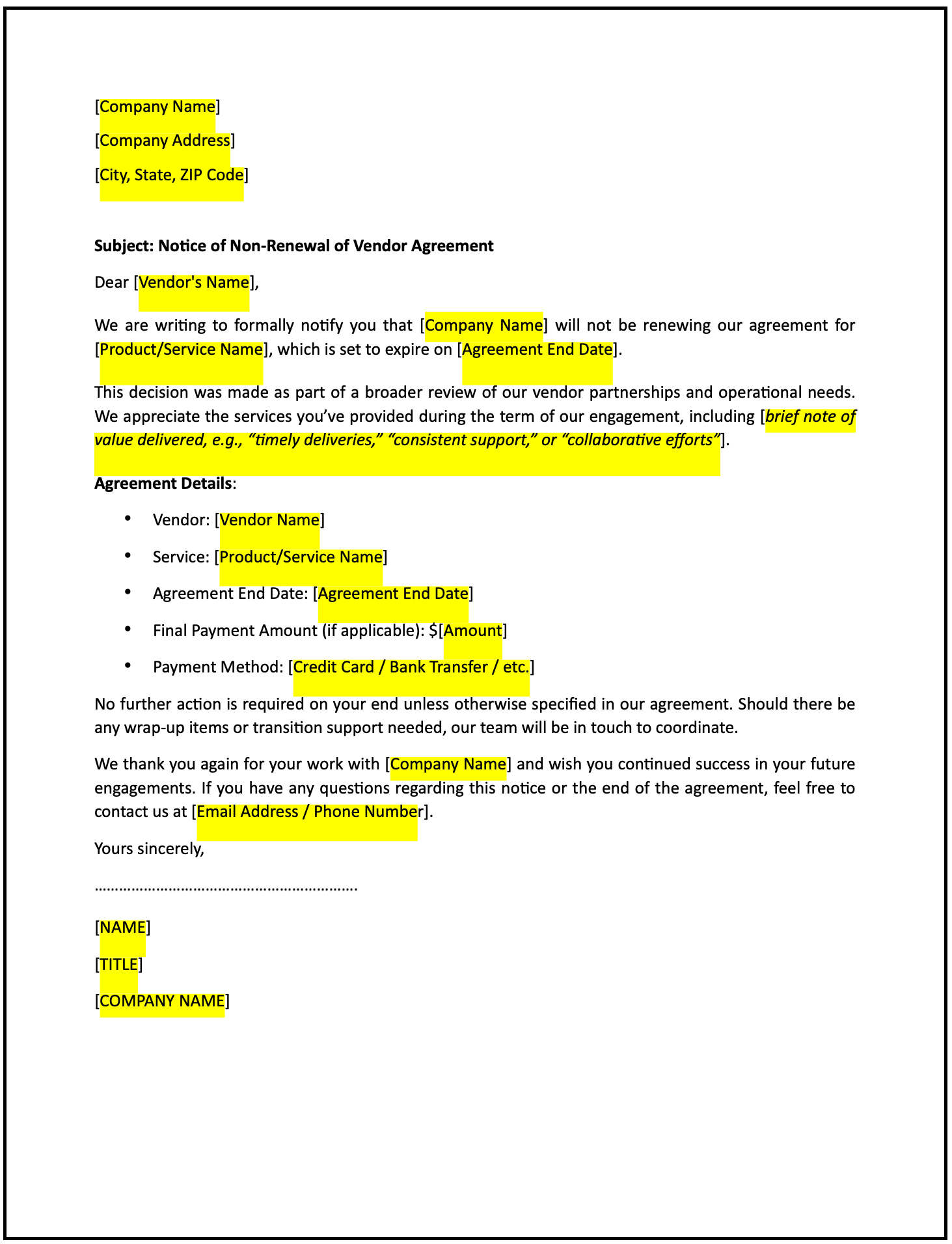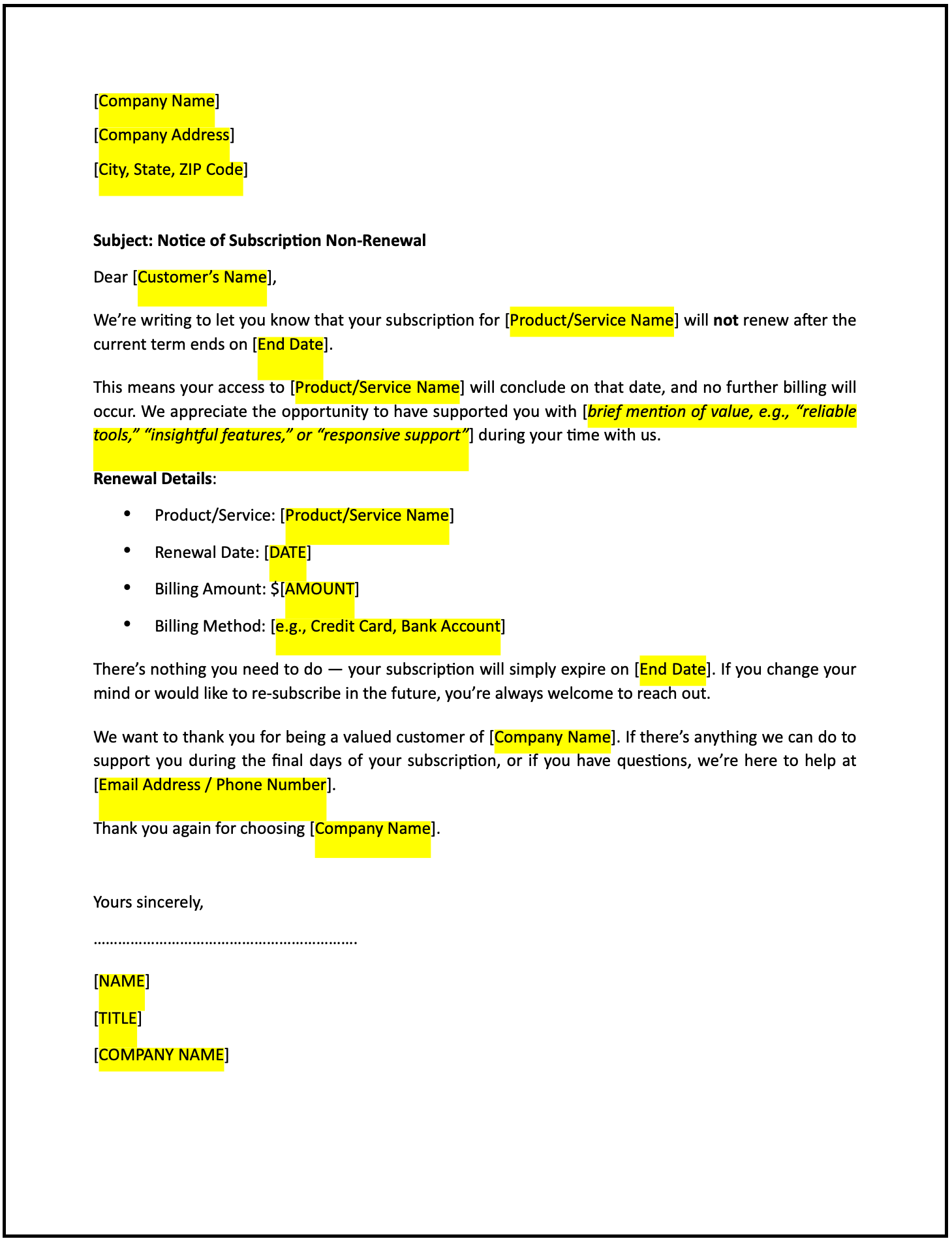Letter of a pivot in business strategy to stakeholders: Free template

Letter of a pivot in business strategy to stakeholders
A notification letter of a pivot in business strategy is a formal communication used to inform stakeholders about a significant shift in the company’s approach, direction, or focus. This letter outlines the rationale for the pivot, its potential impact, and the opportunities it presents while emphasizing ongoing commitment to stakeholders.
How to use this letter of a pivot in business strategy
- Open with an introduction: Address the stakeholders respectfully and acknowledge their importance to the company’s journey.
- Announce the pivot: Clearly state that the company is pivoting its business strategy and provide a brief overview of the new direction.
- Provide the rationale: Explain the reasons for the pivot, such as market demands, customer insights, or growth opportunities.
- Highlight the opportunities: Emphasize the benefits and potential gains from the new strategy.
- Address the impact: Briefly outline how the pivot will affect stakeholders, including operations, partnerships, or investments.
- Reassure commitment: Reaffirm the company’s dedication to its mission and maintaining transparency with stakeholders.
- Encourage dialogue: Invite stakeholders to share their thoughts, ask questions, or provide feedback.
- Maintain a professional tone: Ensure the letter is clear, respectful, and focused on fostering collaboration and confidence.
- Provide contact information: Include details for stakeholders to reach out with questions or schedule discussions.
Benefits of using a letter of a pivot in business strategy
This letter ensures a structured and professional way to communicate major changes while maintaining stakeholder trust and engagement. Here’s how it helps:
- Promotes transparency: Clearly outlining the pivot builds trust and prevents misunderstandings.
- Reflects professionalism: A well-crafted letter demonstrates respect and a commitment to stakeholder relationships.
- Encourages collaboration: Inviting feedback fosters a sense of involvement and alignment.
- Builds confidence: Explaining the rationale and opportunities helps stakeholders see the value of the change.
- Supports ongoing trust: Maintaining open communication reinforces the company’s credibility and commitment.
Tips for writing an effective letter of a pivot in business strategy
- Be specific: Clearly describe the new strategy, the reasons for the pivot, and its expected benefits.
- Use professional language: Maintain a respectful and constructive tone to build trust and confidence.
- Provide context: Briefly explain the market trends, customer insights, or challenges that informed the pivot.
- Highlight mutual benefits: Emphasize how the new direction aligns with stakeholder interests and long-term goals.
- Include actionable steps: Share information about upcoming updates, meetings, or reports related to the pivot.
- Keep it concise: Focus on the essential points while ensuring the tone is professional and engaging.
Frequently asked questions (FAQs)
Q: What details should I include in this letter?
A: Include the new strategy overview, reasons for the pivot, its impact, and next steps for stakeholders.
Q: Should I personalize the letter?
A: Yes, addressing key stakeholders by name and referencing their role demonstrates attentiveness and professionalism.
Q: Who typically sends this letter?
A: CEOs, business leaders, or corporate communication teams typically send this letter.
Q: How formal should this letter be?
A: The tone should be professional, respectful, and collaborative to foster trust and alignment.
Q: When should this letter be sent?
A: Send the letter promptly after finalizing the pivot to ensure stakeholders are informed early.
Q: Can this letter include a timeline for the pivot?
A: Yes, including a brief timeline helps stakeholders understand the implementation process.
Q: Is acknowledgment from the recipient required?
A: While not mandatory, requesting acknowledgment ensures stakeholders are aligned with the new strategy.
This article contains general legal information and does not contain legal advice. Cobrief is not a law firm or a substitute for an attorney or law firm. The law is complex and changes often. For legal advice, please ask a lawyer.


